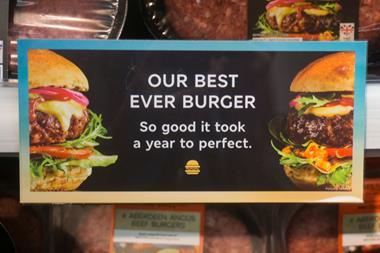Marks & Spencer’s clothing and home arm is a strong contender for being the most difficult business in UK retail to turn around.
The division has struggled to cater effectively to any customer group for years, swinging between chasing younger consumers through its collaboration with Alexa Chung and presenting an uninspiring sea of black trousers to its older customers.
While it has huge market share in certain core categories – most notably lingerie, denim and schoolwear – the division is carrying a lot of baggage and its like for likes continue to slip with practically every passing quarter.

The retailer’s clothing and home boss, Jill McDonald, arrived last year and has been tasked with turning the division around. She, in turn, has hired former Burton boss Wes Taylor as menswear head and Jill Stanton, from Gap’s Old Navy, to lead womenswear and kids’.
The pair are now ensconced at Paddington Basin but it will take time before their work begins to filter through to customers, as is always the case with fashion retail.
“They are already making some changes,” McDonald tells Retail Week, adding that the pair have current open-to-buy product to play with but that their full influence will be felt next autumn/winter.
Outside of the aesthetic of next year’s collections, M&S is already re-engineering key aspects of its clothing and home offer.
Sizing and sub-brands
The retailer has long struggled with availability of smaller sizes and is now taking the long overdue step of upping its buy on sizes 8, 10 and 12, and decreasing the number of larger sizes it carries, bringing it in line with the rest of the market.
This should help eliminate the constant hunt of many of its younger customers – the market M&S needs to get on board the most – for its standout pieces and go some way to persuading them that the retailer can cater for them.
It has already begun to buy less widely and more deeply in key categories such as dresses – where sales lifted 3% during the half – which will also help availability.
It is undertaking a review of its sub-brands, following its decision to trim them in 2016, which led to the cutting of North Coast, Indigo and Collezione.
“This is a work-in-progress,” chief executive Steve Rowe tells Retail Week. “We already simplified the sub-brands. There were too many in the business and Jill and the team will be making sure that they represent the brand that we want to be and that they are attractive to a newer, younger customer. We have got to reflect a contemporary handwriting. We will make some changes in summer next year.”
While the number of sub-brands is certain to decrease, most interesting will be not which ones end up on the cutting room floor, but what new sub-brands might be created.
The last time M&S produced a new sub-brand was in 2009 with Indigo. Per Una and Autograph are both over a decade old. Whether or not M&S chooses to create another sub-brand will be a huge statement of intent about how the retailer sees itself and what it wants its future to be.
Pricing and proposition
M&S is also trimming its prices to be more competitive and adding more product to the ‘good’ section within its price architecture – that section now makes up 19% of sales, up from 7% in the first half of 2015/16. The ‘best’ contribution has shrunk, going from 36% of sales in 2015/16 to 20% this half.
This recalibration of pricing should help woo a younger, more family-oriented, cash-strapped shopper – M&S’ target across both clothing and home and food – and help the retailer reach its next generation of customer.
M&S will try to capture those consumers through its core categories – denim, suiting, lingerie and schoolwear – and then convert them to other parts of its ranges, hence Stanton’s appointment across womenswear and kidswear. Rowe has previously spoken about how younger customers turn to M&S in key moments in their lives and how the retailer can capitalise on that.
Supply chain
The business is also tackling its archaic supply chain. It admitted that “stock levels, availability, markdown and waste all remain at uncompetitive levels” and is taking steps to improve this.
Shockingly, the business carries 20 weeks worth of stock at any one time, meaning that supply chain and store operating costs are made higher by slow-moving stock and the complexity of handling such a wide range of stock. M&S is now implementing comprehensive programmes to address these.
While M&S is making a host of positive adjustments to its fashion offer, these changes simply bring it up to scratch and more in line with the rest of the market on a technical basis: better sizing, lower pricing and a refreshed sub-brand offer make up the supporting cast.
Taylor and Stanton will need to bring something special to M&S for sales to begin rising once more.
M&S profits rise but sales continue to fall
- 1
- 2
 Currently reading
Currently readingAnalysis: How Marks & Spencer is refashioning its clothing offer
- 3
- 4





























No comments yet